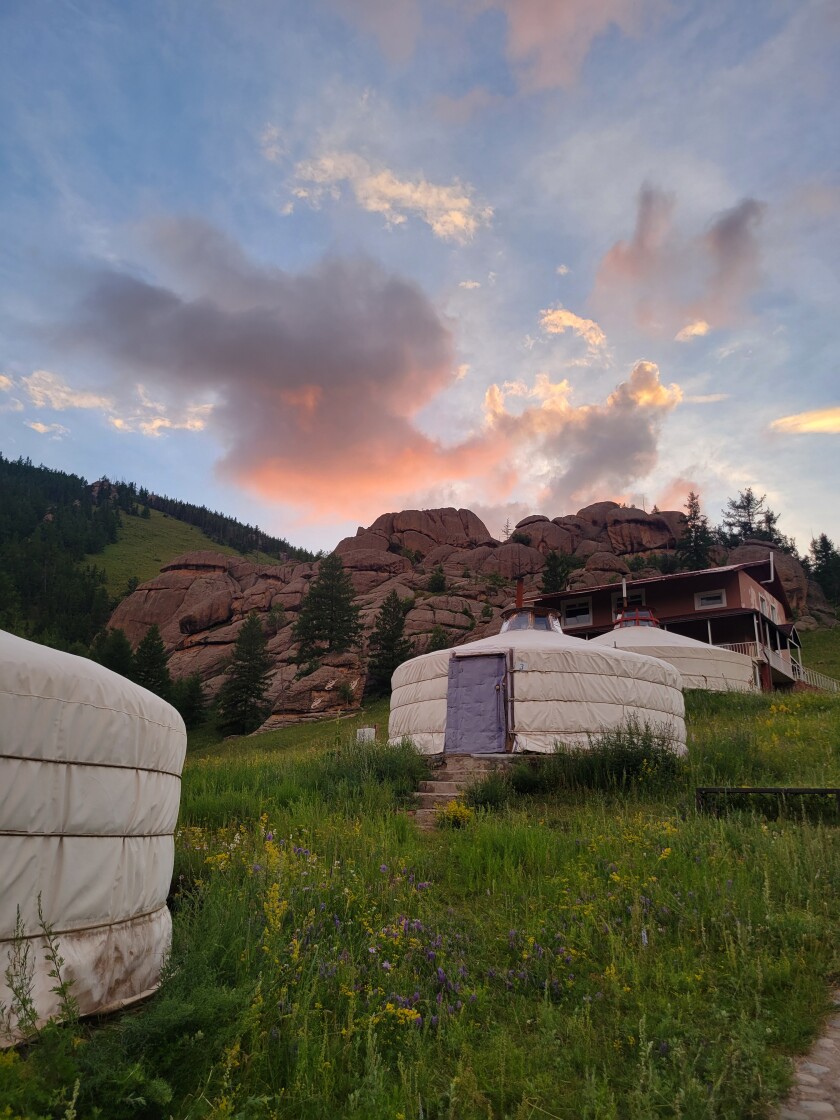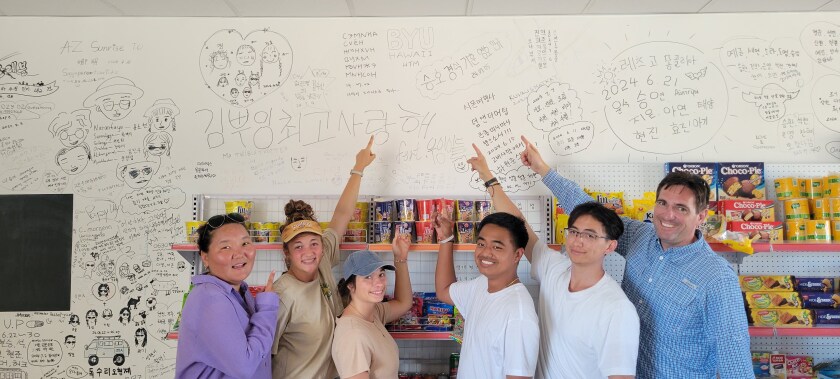
Hospitality and tourism management (HTM) students from BYU–Hawaii, led by Professor Jeff Christensen, embarked on a transformative journey to Mongolia from July 5 to 22, taking part in initiatives to enhance the country’s tourism industry that combined academic learning with impactful real-world application. The trip’s team included HTM students Asa Agbayani, Myriah Ellison, Eimeo Lee Chip Sao, and Serena Wall.
Beauty and Opportunity in Mongolia
The journey had an unexpected beginning. As the HTM program continued its efforts to rebrand Kiribati’s tourism, it caught the attention of Boncom, The Church of Jesus Christ of Latter-day Saints’ public relations agency based in Salt Lake City, Utah. Boncom sought out the HTM program’s expertise and invited student involvement in their destination management proposal to the Mongolian government. Around the same time, a Mongolian tour operator approached Christensen for help understanding the North American market, one of Mongolia’s current targets. Recognizing the need to better understand Mongolia’s tourism offerings firsthand, the team embarked on an exploration of the country.

The trip had three main objectives: connecting with the Mongolian government’s Tourism Organization (MTO), engaging with tourism-related NGOs, and meeting with private tour operators, attractions, and lodging operations.
“The MTO is responsible for designing Mongolia’s brand, and we wanted to understand how we could support them,” Christensen said. The students evaluated the MTO’s current marketing campaigns as well as hotels, yurt camps, and nomadic homestays, offering insights on appealing to North American and European tourists. Christensen also highlighted Mongolia's potential for year-round tourism with winter attractions like skiing, an ice festival, and rare wildlife, noting that better marketing could extend the country’s short high season. "The trip made me understand more about how the world of tourism is constantly improving and the importance of having local individuals involved in that development. There is so much space for personal growth for Mongolian students to study HTM and then go back and secure any job, specifically management and leadership roles in the industry,” said Asa Agbayani, a senior from Honolulu, Hawaii.
A highlight of the trip was experiencing the Naadam Festival, a centuries-old national celebration featuring traditional sports like horse racing, archery, and wrestling. The Mongolian culture captivated the HTM team who participated in the festival before visiting Mongolia’s most famous landmarks, including the Gobi Desert and Chinggis Khan statue. Serena Wall, a senior from Utah, spoke of an enlightening experience during the festival, saying, “There was a competitive tour operator sitting a few rows above us. We weren’t scheduled to meet with him, but recognizing who we were, he decided to ask if we could have a translated interview with them. It deeply enhanced the experience as we not only got to meet with an additional tour operator but also understood the time, energy, and sacrifice that went into the participant’s profession. This would not have been possible had he not seized the moment and asked.”
Despite the breathtaking sights and incredible experiences, the team realized the challenges Mongolia faces in attracting its desired tourist demographic. Many of the current tourists are adventure travelers willing to camp and rough it, but as Christensen noted, “They don’t bring a lot of money into the economy.” Mongolia is eager to attract tourists who have the time and resources to invest in longer, higher-end trips. The team’s mission was to explore how to tap into that market.

Endless Possibilities for HTM
Reflecting on the journey, the team acknowledged the blessings and difficulties of promoting tourism in a country with minimal infrastructure and vast distances between sites. “One valuable lesson I gained from this trip was the power of collaboration. Sometimes, we have ideas or visions we cannot achieve on our own, but when we work together with others, it can become something great. This is what we were doing all throughout our trip,” Wall shared, emphasizing how teamwork enabled them to flourish in accomplishing their mission.
Myriah Ellison, a junior from Idaho, states that the connections she made during the trip could play a critical role in her future. “Some of the professionals we talked to have started businesses very similar to the ones that I have thought of doing,” she said. “I imagine I could stay connected with them, which could help jumpstart me into what I want to do by working with someone with that much experience. I realized that it can greatly help the locals if done correctly. There must be a lot of care and attention to make sure it doesn't invade their culture and traditions.”

Eimeo Lee Chip Sao, a sophomore from French Polynesia, reflected on his experience, stating, “Mongolia’s tourism officials have given me new insight on what to do in the future. There are so many opportunities to go into such kind of hospitality.” The trip expanded Lee Chip Sao’s vision, showing the endless possibilities in the hospitality industry.
“Upon the Four Corners of the Earth”
The trip to Mongolia was not just a professional experience but a spiritual journey as well. The students felt that their faith and discipleship were strengthened through their service and connections with the people of Mongolia.
Ellison felt the spiritual significance of the trip, particularly given Mongolia’s importance to The Church of Jesus Christ of Latter-day Saints. “To me, that put a lot of importance and pressure on this trip. I think any positive connection with the Church and BYU–Hawaii will help the country,” she said. She cited Doctrine and Covenants 124:128, which speaks of the Church’s authority reaching the four corners of the earth: “This trip showed me that I can incorporate the gospel in all aspects of my life, even in my career.”
Agbayani drew a parallel between their mission in Mongolia and the experiences of the sons of Mosiah from the Book of Mormon: “Being in a foreign land and also getting to share our input made me realize that we have to know the people on a personal level like Ammon did to serve others the most that we can.” He also reflected on James 2:17, emphasizing the importance of faith in action: “I want to be involved in kickstarting some of the projects we uncovered and to help tourism flourish in Mongolia. As we learn in the Church, everywhere lies potential as we continue to diligently and consistently act in faith.”
The BYU–Hawaii HTM students’ experience in Mongolia went far beyond the development of tourism initiatives. Their journey created professional connections, deepened their understanding of their field, and strengthened their faith and discipleship in Jesus Christ. They are making a lasting impact on the future of tourism in Mongolia and, in turn, on their own lives as they continue to build their future aspirations.

